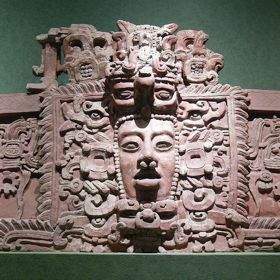New Maya Calendar Discovery Disproves '2012' End-Of-Days Prediction
Believers in the Maya calendar prediction that the world will end on December 21, 2012, rest easy. You just got a reprieve of about 6,000 years, according to most interpretations. Archaeologists have discovered a new buried room in ancient city of Xultun, located in the depths of the Guatemalan rain forest, that is filled with ancient numerical calculations that depict an "extended" Maya calendar.
The new timeline revealed by the Xultun calculations extends approximately 6,000 years beyond the previous 2012 Maya calendar prediction, according to findings published in the Science journal, reports NPR. "The wall is covered in numbers and this is something that really got our attention very early on," said David Stuart of the University of Texas, Austin. "This is an unusual thing about the Xultun mural," Stuart revealed.
Scholars everywhere seem to agree about the previous misunderstanding of the Maya calendar. "Why would they go into those numbers if the world is going to come to an end this year?" said Anthony Aveni at Colgate University, reports ABC News. "You could say a number that big at least suggests that time marches on."
The buried city of Xultun was discovered in 1915, but only became subject to study about four years ago, due to its remote location and difficult access. By the time William Saturno from Boston University got an emergency grant from the National Geographic Society to explore Xultun, most everything inside had been looted, reports NPR. But the murals with the new figures for the Maya calendar remained.
The only question that remains is, who will be around to star in the inevitable sequel to 2012 (8012?), which stars John Cusack, Amanda Peet, Thandie Newton, and Oliver Platt. 8012 will likely hit theaters in about 6,000 years, give or take.
RELATED ARTICLES
Get the most-revealing celebrity conversations with the uInterview podcast!






Leave a comment